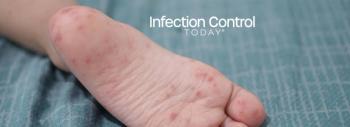
Enhancing Poliovirus Surveillance: Key Insights for Infection Prevention Personnel
The fight against poliovirus continues with renewed urgency as recent surveillance data reveals both progress and persistent challenges. In a critical update, infection prevention personnel are presented with key insights into the ongoing battle against this scourge.
The ongoing global effort to eradicate wild poliovirus (WPV) hinges on robust surveillance systems that monitor cases of acute flaccid paralysis (AFP) and environmental samples for poliovirus. Since its inception in 1988, the Global Polio Eradication Initiative (GPEI) has achieved remarkable success, with WPV serotypes 2 and 3 declared eradicated. However, the challenge remains with WPV serotype 1 (WPV1) persisting in endemic regions such as Afghanistan and Pakistan.
A recent study published by the CDC, “
“During 2022–2023, among 28 priority countries experiencing or at high risk for poliovirus transmission, 20 (71.4%) met national AFP surveillance indicator targets, and the number of environmental surveillance sites in priority countries increased,” the authors wrote. “However, substantial national and subnational AFP surveillance gaps persist.”
In the WHO African Region (AFR), 18 of 21 countries met surveillance targets in 2023, all of which met the NPAFP rate target. WPV1 cases were detected only in Afghanistan and Pakistan, and no cases have been reported outside these endemic regions since August 2022.
The data analyzed in this study were sourced from the World Health Organization (WHO) Polio Information System and the Global Polio Laboratory Network (GPLN). Surveillance quality was assessed using indicators such as the nonpolio AFP (NPAFP) rate and stool adequacy, alongside environmental surveillance (ES) site sensitivity for poliovirus detection.
In 2023, 27 of the 28 priority countries (96.4%) had at least one Environmental Surveillance site reporting (ES). The number of ES sites has increased, especially in the Eastern Mediterranean Region, due to Pakistan's addition of 308 new sites. However, some countries, such as Somalia and Sudan, reported a decline in the proportion of sites that met the enterovirus detection targets.
GPLN tested 233,437 stool specimens collected from AFP patients, with most regions meeting timeliness targets for viral isolation and reporting—genetic sequencing identified circulating WPV1 strains linked to endemic transmission in Afghanistan and Pakistan and outbreaks in Mozambique.
The results emphasize the significance of sustaining and enhancing the poliovirus surveillance systems. Even though some progress has been made, obstacles still need to be addressed, such as delayed surveillance reporting and insufficient subnational surveillance coverage. Identifying WPV1 cases from other countries in Malawi and Mozambique highlights the necessity of swift outbreak response and collaborative cross-border efforts.
It is important to note that the report's findings have certain limitations. For instance, metrics can take several weeks or months to be uploaded, affecting trends. Additionally, higher-level performance measures can obscure variations at lower administrative levels. It is important to consider large populations in hard-to-reach areas to ensure everyone is accounted for. Finally, it is important to understand that meeting performance indicators only guarantees robust surveillance if the individuals involved are well-trained and supervised.
Infection prevention personnel play a crucial role in supporting surveillance efforts for
Effective poliovirus surveillance remains a cornerstone of the GPEI's strategy, with the latest findings reflecting progress and areas for improvement. Continued vigilance, collaboration, and investment in surveillance systems are essential to work towards a polio-free world.
Newsletter
Stay prepared and protected with Infection Control Today's newsletter, delivering essential updates, best practices, and expert insights for infection preventionists.






